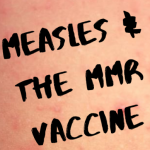Podcast interview with Outbreak News Today on MMR and the Measles
I’m so passionate about the MMR vaccine and the eradication of the measles. If you’re interested in learning about some interesting new research and some more about the vaccine and virus, listen to this new podcast of me interviewed by Outbreak News Today!

